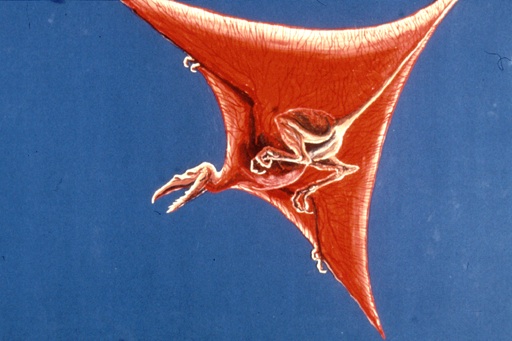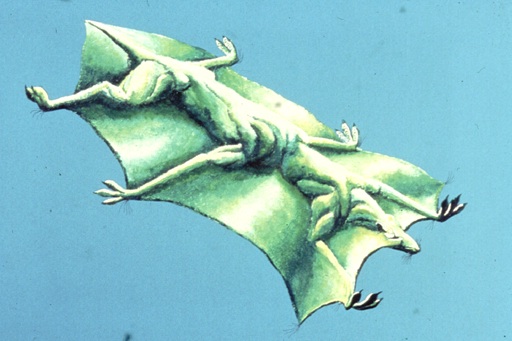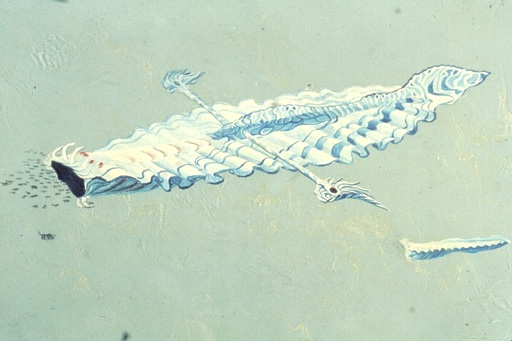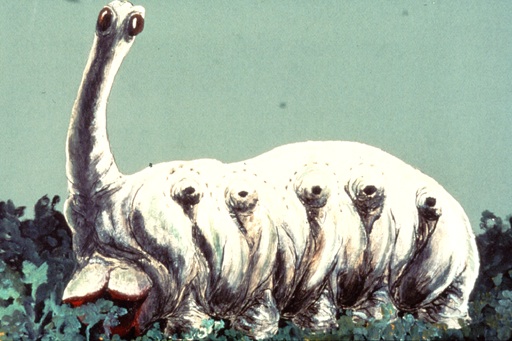Modern Mars Exploration
Exobiology Activity
Mars missions have revealed Mars as a world of exciting new possibilities for life: as a potential abode of life in the past, perhaps still harboring life which has adapted to the increasingly harsher environment. But the possibilities are mostly for microscopic life. The idea of intelligent beings on Mars sounds as fantastic to us today as it did a century ago, when Lowell and others suggested it.
The idea of intelligent life existing somewhere in the universe besides Earth is a very reasonable one, an idea that many scientists today share. Beyond our star, the Sun, there are billions of other stars in our galaxy that may support other forms of life, even intelligent life. We’re only just beginning to discover planets around other suns.
Scientists today who investigate the possibility of life on other planets are called exobiologists. Exobiologists try to determine what life forms might exist on other planets with conditions different from those on Earth.
Let’s examine some modern exobiology. We are going to see several creatures designed by exobiologist Bonnie Dazell for an exhibit at the National Air and Space Museum of the Smithsonian Institution in Washington D.C. These imaginary creatures have special features that have evolved to help them survive on planets other than Earth.
VISUAL 29 (still): Red Hop Flier

This is a Red Hop Flier. It’s the kind of creature we might expect on a hot planet with low gravity. There, a hopping creature would be able to travel a good way on a single hop, and assisted by his thin wing, the Red Hop Flier gets around nicely.
Does the shape of the Hop Flier’s wing look at all familiar? Where have you seen that shape before?
Hang gliders on Earth look very similar. Although air is thinner on a low-gravity planet, the laws of aerodynamics are the same, and a delta wing is a good design. The big wing is good for flying, and the veins help cool his blood on this hot planet.
VISUAL 30 (still): Gliding Green Carnivore

By contrast, this creature glides on a high-gravity, thick atmosphere planet. He needs less wing surface for his body mass. Even with six legs, however, he does not hop far due to the high gravity.
VISUAL 31 (still): Outrigger Ribbon Fish

Here is a huge fish by Ms. Dazell designed for a planet with lots of ocean and very high gravity. The creatures this fish seems to be eating may be about the size of whales!
Why would the largest animals on a high-gravity planet probably be found in the ocean?
[Hint: Where are the largest mammals found on Earth? Whales live in the sea, because the buoyancy of their bodies in the water reduces the great internal strength that’s needed to keep such a huge creatures from collapsing under gravity’s pull.]
VISUAL 32 (still): Bandersnatch

Here is a creature designed for the land of a high-gravity planet.
What features does the Bandersnatch have to help him survive on his high-gravity planet?
[Very thick and sturdy neck, ten short and thick legs, large, low mouth to eat plants that grow close to the ground.]
Let’s see the kind of imagination necessary to be an exobiologist. Suppose you are trying to decide what possible forms of life might inhabit a Mars-like planet.
How is Mars different from the Earth?
[It has lower gravity, much thinner atmosphere, and much colder weather.]
The gravity is only about 1/2 Earth’s gravity. Temperatures are below zero most of the time on Mars. Martian atmospheric pressure is only 1/100 that of Earth. Now close your eyes and picture in your mind a creature that would be adapted to lower gravity, colder weather, and much thinner atmosphere.
On the bottom of your sheet of paper is a drawing showing some forms of life that have evolved to meet Planet Earth conditions. They might not be suitable for a Mars-like planet.
In the blank box, please make a rough sketch of the imaginary being that you pictured in your mind that would be adapted to life on a Mars-like planet.
Note:
Adults are often shy about this open-ended activity. Encourage them to give it a try. Sometimes injecting humor helps a lot. Give people time to draw.
Optional: Play music suitable for drawing Martians. Ask people to compare their ideas with their neighbors. Answer any questions you can. When most people have finished, go around and show a few drawings (using opaque projection if available), asking people to explain what survival features their Martians have. Compliment clever adaptations.
DIGITAL EFFECT: End Creatures
Fade off all sample creatures.

